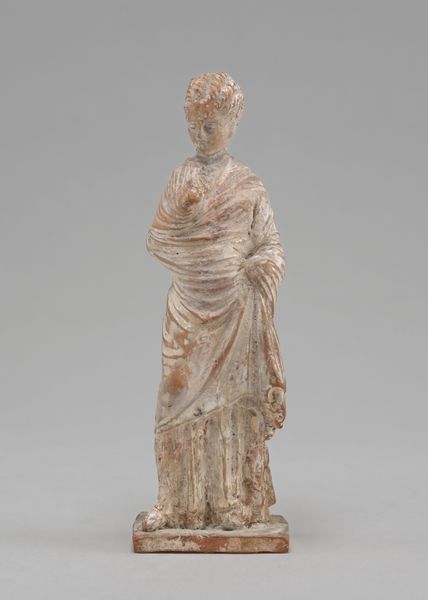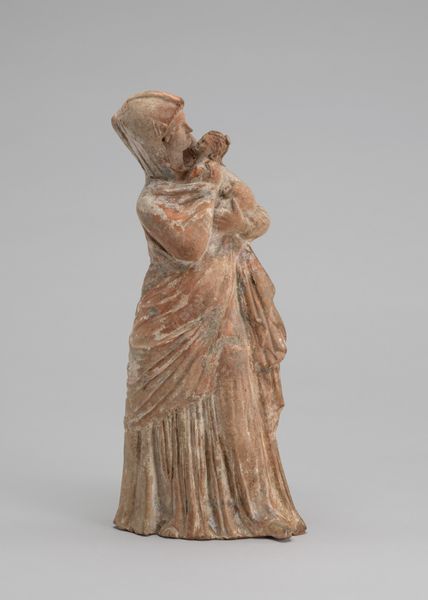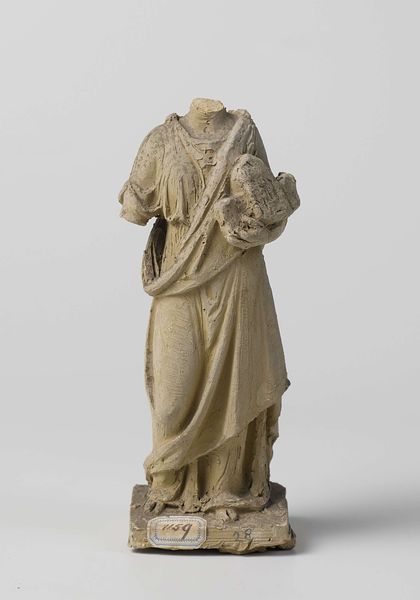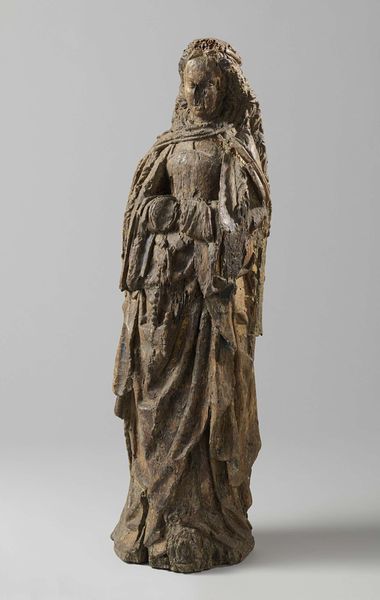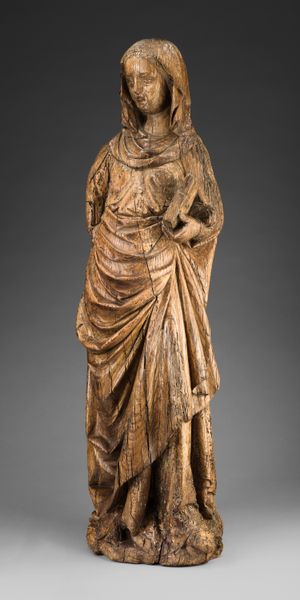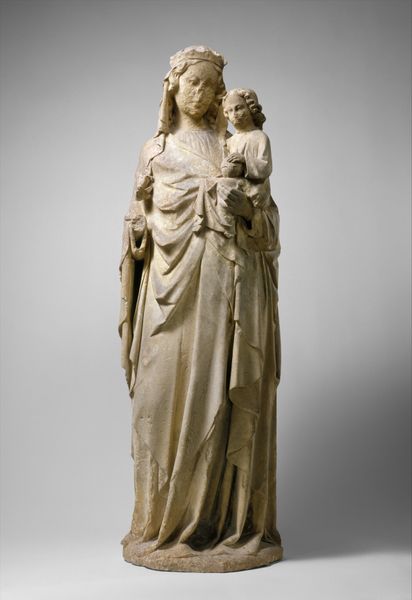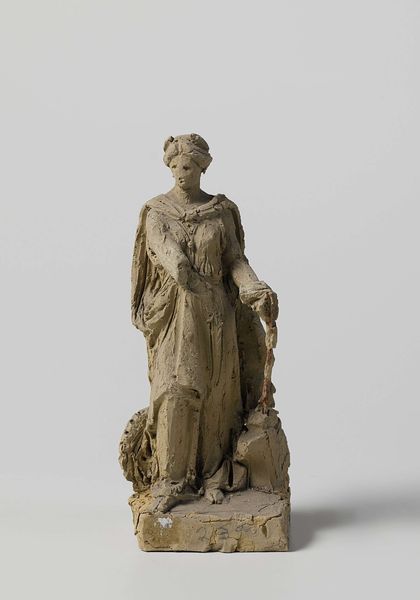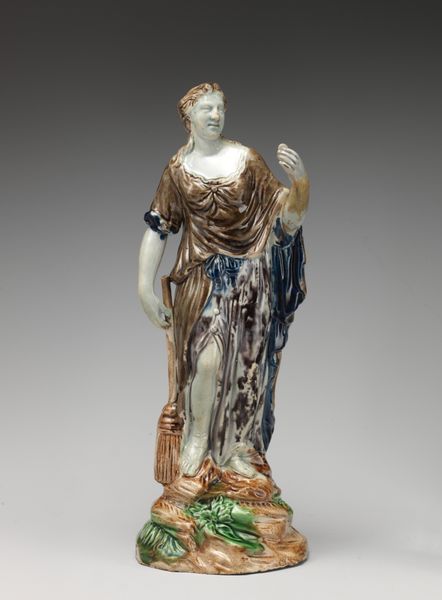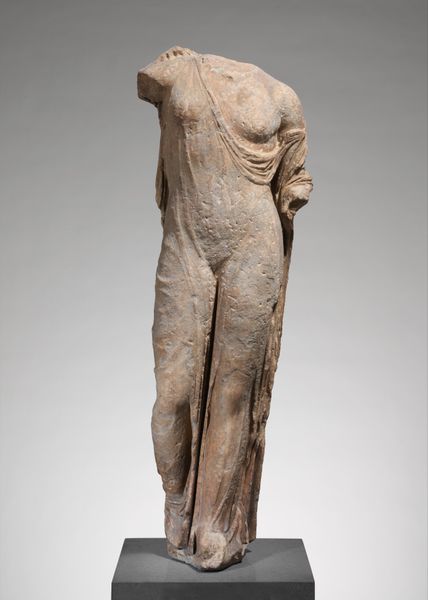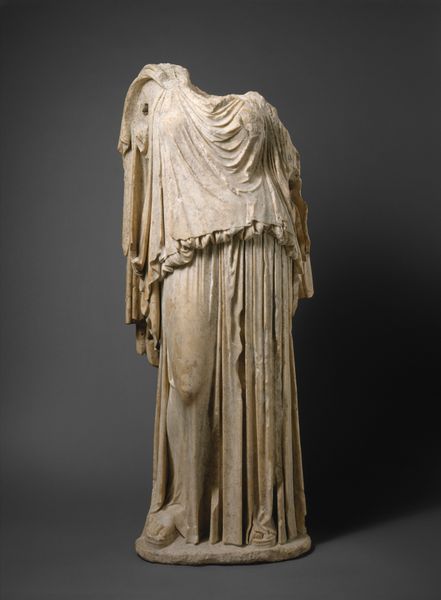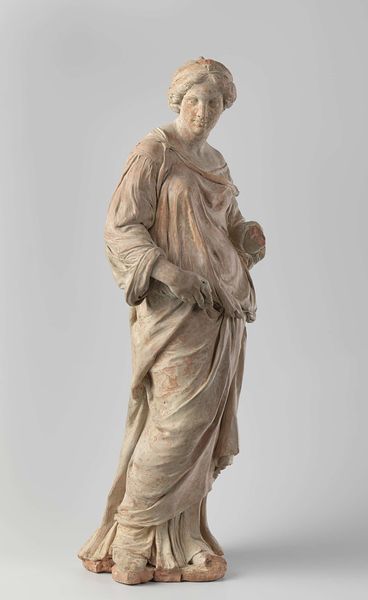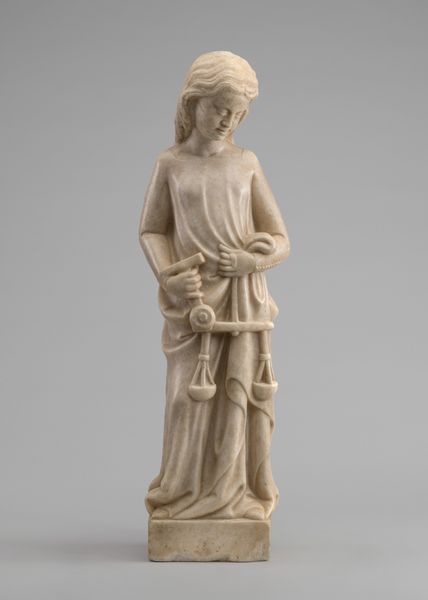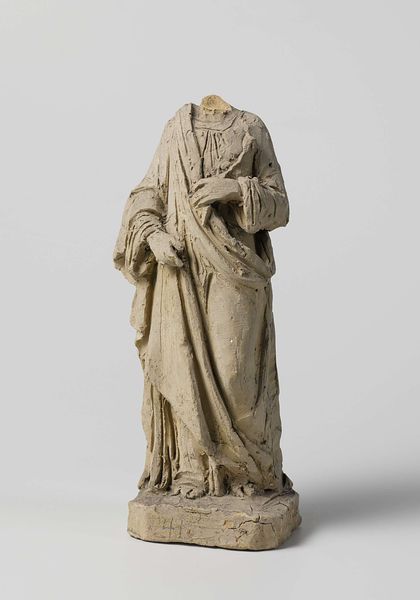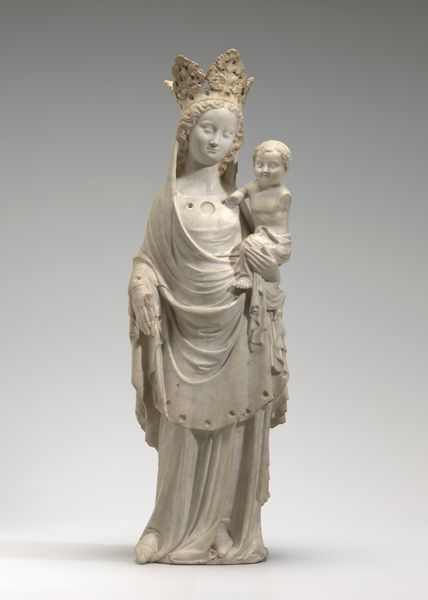
Ephebe in Traveling Hat, Cloak, and Boots c. late 4th century
0:00
0:00
sculpture, terracotta
#
portrait
#
sculpture
#
greek-and-roman-art
#
figuration
#
ancient-mediterranean
#
sculpture
#
terracotta
Dimensions: overall: 26.04 × 8.6 × 7.3 cm (10 1/4 × 3 3/8 × 2 7/8 in.)
Copyright: National Gallery of Art: CC0 1.0
Curator: Let's turn our attention to this fascinating terracotta statuette, "Ephebe in Traveling Hat, Cloak, and Boots," dating back to the late 4th century B.C. Editor: It projects a certain weariness, wouldn’t you say? The slump of the shoulders beneath the cloak, the somewhat tired expression... Curator: Precisely! Notice how the sculptor utilizes subtle shifts in weight and posture to convey this mood. The positioning of the figure, slightly off-center on its base, creates a dynamic tension. Semiotically, his garments—the hat, cloak, and boots—speak to travel, to perhaps a young man's journey. Editor: The outfit indicates travel, but given the era, I’d like to consider what journey might be afforded to some but denied to others. Whose journeys were celebrated, and whose were perilous escapes from enslavement? This ephebe is a symbol of privileged mobility in a stratified society, no? Curator: An important point. But if we consider the artistic elements alone, observe how the drapery folds create a compelling interplay of light and shadow. The artist is clearly adept at rendering textures, distinguishing between the soft cloak and the sturdy boots. Also note the hat; it seems slightly askew. Is it an intentional imperfection, an expression of individuality against the backdrop of classical ideals? Editor: I agree that there’s undeniable skill on display. And you are correct. Perhaps there’s something defiant, an “askewness,” if you will, challenging us. But, in this era of heightened awareness, it also demands we investigate the narratives often left untold or misrepresented in these classical portrayals. Can we use him to consider the many untold stories of those whose movements were controlled rather than chosen? Curator: A valuable addition to our understanding. Looking closely at this statuette reveals so much about artistic technique but even more about the broader society of the time. Editor: Exactly. By challenging and expanding our art historical perspectives, we encourage empathy and understanding beyond aesthetics.
Comments
No comments
Be the first to comment and join the conversation on the ultimate creative platform.
